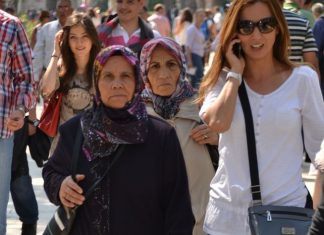Introduction to Cultural Change
By the late 19th century, the Ottoman Imperial Harem had undergone dramatic changes from its traditional roots. What was once a purely Eastern institution had become heavily influenced by European customs, fashion, and lifestyle. This transformation reflected the broader modernization efforts taking place throughout the Ottoman Empire during this period Life of the Sultanas.
Fashion and Clothing
European Dress Becomes Standard
Almost all the ladies in the imperial harem had adopted European-style clothing as their daily wear. This represented a significant shift from traditional Ottoman dress and showed how European influence had penetrated even the most private areas of the imperial palace. The change in clothing was not just about fashion—it symbolized a broader cultural transformation.
Exceptions to the Rule
The only women who still wore traditional native costumes were the newest arrivals, particularly young girls who came from rural areas deep within the empire’s interior. These women had not yet been exposed to the European influences that dominated palace life, so they maintained their traditional dress until they adapted to harem customs.
Parisian Fashion Connection
The sultanas employed French maids to help them with their daily needs and appearance. More importantly, they ordered their gowns and hats directly from Paris, which was then considered the world’s fashion capital. This direct connection to French fashion ensured that the women of the harem were wearing the latest European styles, often before they became popular elsewhere in the empire.
The Fashion Trade
French Designers Visit Constantinople
Regularly, French fashion designers and hat makers (called modistes and milliners) would travel to Constantinople (modern-day Istanbul) with samples of their latest creations. These visits were highly anticipated events in the harem, as they provided the sultanas with the opportunity to see and order the newest fashions from Europe daily sofia tour.
Generous Spending on Fashion
The sultanas were excellent customers for these French designers. They placed very large and generous orders, spending considerable amounts on their wardrobes. This spending reflected both their wealth and their desire to maintain fashionable appearances, even though they were rarely seen by men outside the palace.
Social Dynamics Within the Harem
Competition and Rivalry
Despite their isolation from the outside world, the women of the harem maintained all the typical feminine interests and behaviors. There was significant rivalry among them, particularly in matters of fashion and appearance. This competition was natural, as each woman sought to distinguish herself and potentially gain the Sultan’s favor.
A Rare Public Appearance
The author describes witnessing one of the Sultan’s favorite wives and her daughter during a rare public outing. They were riding in a victoria (a type of horse-drawn carriage) and were accompanied by a Black eunuch and a military escort for protection. Even during this public appearance, they wore European-style clothing but kept their faces covered with heavy veils so their features could not be seen.
Living Conditions and Daily Life
European-Style Furnishings
The apartments within the harem were decorated and furnished in European style, completely abandoning traditional Ottoman interior design. This change extended to every aspect of their living spaces, from furniture to decorative items, creating an environment that would have been familiar to any European aristocrat of the time.
Dining and Cuisine
Meals in the harem were served European-style, with French cooks preparing the food. This represented a dramatic departure from traditional Ottoman cuisine and dining customs. The adoption of European dining practices showed how thoroughly European influence had penetrated daily life in the harem.
Language and Literature
French as the Common Language
French had become the common language spoken among the sultanas. This was the language of diplomacy and culture throughout much of Europe at the time, and its adoption in the harem reflected the women’s education and their connection to European culture.
Reading European Literature
The sultanas regularly read French novels, keeping up with European literature and ideas. This reading habit connected them to the broader intellectual currents of European society, even while they remained physically isolated within the palace walls.
The Disappearance of Traditional Customs
Debunking Popular Myths
The author emphasizes that traditional Turkish customs had become almost completely obsolete in the harem. The romantic image of the harem that existed in many people’s imaginations—with women sitting cross-legged on silk rugs, playing guitars, and eating sweet treats—was no longer accurate, if it ever had been.
Modern Royal Lifestyle
Instead, the women lived much like any other royal family of the time, with European customs, furnishings, and daily routines. The main differences were the restrictions placed on their social interactions and their requirement to wear veils when leaving the palace.
Medical Care and Innovation
British Medical Attention
When the Sultan’s wives became ill, they were treated by the male physician from the British embassy. This arrangement represented a significant innovation and departure from traditional practice, as previously no Christian physician had been allowed to enter the harem.
Maintaining Modesty During Treatment
Even during medical examinations, the women maintained their modesty by remaining veiled. Whether they were sitting up or confined to their beds, strips of muslin fabric were placed over their faces to ensure that the doctor could not see their features, even while providing medical care.
The transformation of the Ottoman Imperial Harem from a traditional Eastern institution to one heavily influenced by European customs reflects the broader changes occurring throughout the empire during this period. While the women maintained their isolation from society and continued to observe certain traditional practices like veiling, their daily lives had become remarkably similar to those of European aristocrats. This cultural evolution demonstrates how even the most private and traditional institutions can be transformed by the influence of foreign cultures and the desire for modernization.







